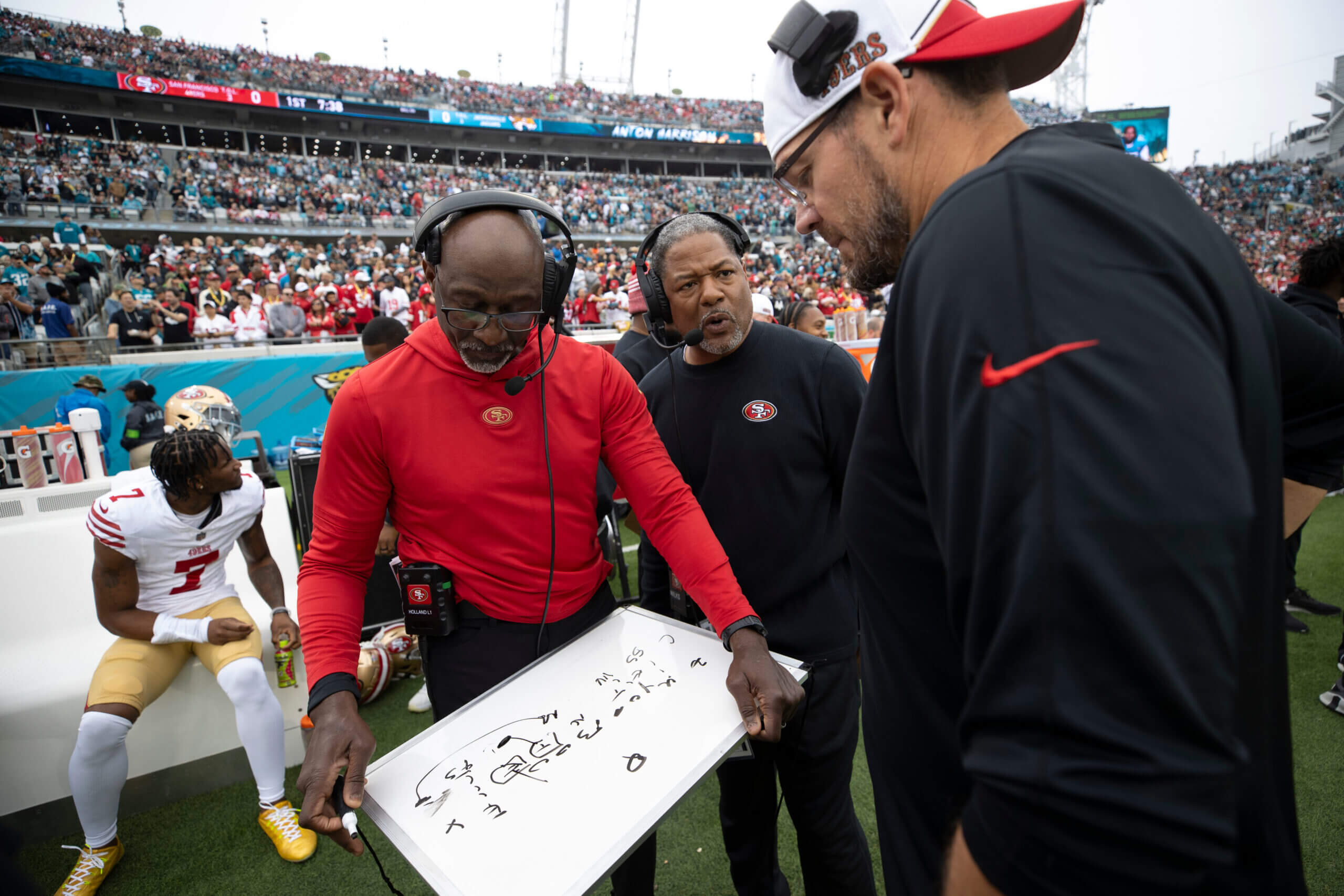SANTA CLARA, Calif. — “Twenty-nine to 1.”
That quickly became Steve Wilks’ mantra when then-San Diego Chargers defensive coordinator Ron Rivera tapped Wilks to run his secondary in 2009. The Chargers had been at the bottom of the league in pass defense the year before and Wilks’ task was to bring it to the top.
Advertisement
It took him two seasons. The Chargers gave up just 177.8 yards per game through the air in 2010, the best in the league.
He and Rivera had previously worked together in Chicago and were comfortable with each other. Rivera had always been impressed with his assistant’s presence, his command. And when he arrived in San Diego, Wilks had license to shake things up. He was aggressive with his scheme, he challenged established players.
He even challenged Rivera after he became a head coach with the Carolina Panthers and brought Wilks with him.
“He’s one of the guys who could come into my office and basically say, ‘Coach, you f—ed that up,’” Rivera recalled earlier this year. “He’d be very honest and very blunt and tell me what I needed to hear, not what I wanted to hear.”
Which, of course, is nothing like Wilks’ onboarding experience in San Francisco. Shake things up? Heck, no. The 49ers had the NFL’s top defense last season, after all. Wilks’ instructions were to keep everything the same, which is like hiring a decorated head chef and telling him not to change the menu. And not just that — Wilks arrived without a single assistant. He was a head chef who had to lean on sous chefs to learn how things were done in the Bay Area.
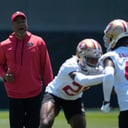
GO DEEPER
Inside Steve Wilks' crash course on the 49ers' defense and the history behind it
“It’s definitely been unique,” he said in a recent interview with The Athletic. “A lot of people, individuals, probably could not handle being in this situation because if you haven’t experienced a lot, it probably could be intimidating for you.”
At midseason, Wilks and the 49ers seemed like an awkward fit. His unit looked nothing like a No. 1 defense in losses to the Minnesota Vikings and Cincinnati Bengals, he’d been publicly chided by head coach Kyle Shanahan for a calamitous play call in Minnesota and he’d been prodded to relocate — from the coaches box to the sideline — on game days. San Francisco and its loaded roster had a three-game losing streak heading into its Week 9 bye, and everyone was eying the new guy.
Advertisement
After the bye? It’s been an entirely different story. The 49ers defenders haven’t merely been playing like their 2022 selves, they’ve been even better.
In Week 10, Wilks’ unit thoroughly confused quarterback Trevor Lawrence and held the Jacksonville Jaguars to 3 points, their lowest output in two years. In Week 11, it limited the Tampa Bay Buccaneers to two touchdowns. The following Thursday, Geno Smith and the Seattle Seahawks offense never reached the end zone. In Week 12, the 49ers went on the road and held a Philadelphia Eagles offense that had been averaging 133 yards on the ground to 46 yards. And Sunday, the Seahawks were a meager 2-of-11 on third downs.
No defense has been stingier over the last five weeks — San Francisco’s has yielded 11.6 points a game over that span — and no assistant has rebounded as sharply as Wilks, whose name now routinely appears on head-coaching lists for the upcoming hiring cycle. (Sunday, Wilks and the 49ers will square off with the Arizona Cardinals, who made Wilks a one-and-done head coach after a 3-13 season in 2018.)
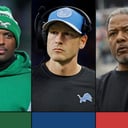
GO DEEPER
NFL head coaching candidates for 2024: Ben Johnson, Brian Johnson and 12 others to watch
Players and coaches cite various reasons for the post-bye rebound:
• For one, the defense finally had gotten some rest. An emotional win over the Dallas Cowboys in Week 5 was followed by road games in Cleveland and Minnesota. And when the 49ers returned home to play the Bengals, it was like they were running in mud.
“I felt like we were really tired,” Wilks said. “You could really see it in that Cincinnati game. But ever since then, man, the guys in the locker room have just stepped up to the challenge.”
• The 49ers added defensive end Chase Young over the bye, which seemed to stimulate all of the defensive ends on the roster. Collectively, they had 8 1/2 sacks in the eight games before the bye. They have 11 in the five games since.
• The 49ers defensive backs, particularly the cornerbacks who are coached by Wilks, have been strong in the last five weeks. That includes Ambry Thomas, who took a step backward last season and played only 41 snaps, but who has logged 274 snaps — starter-level numbers — since the bye.
Along with Javon Kinlaw and Drake Jackson, Thomas is one of the young players Wilks took special interest in as far back as the spring.
“What I love about him most is that he’s emphasizing working on the details,” Wilks said. “I always talk about the details and competing against yourself. And I can see that with him each and every day.”
• Finally, there’s Wilks’ game-day descent to the sideline, which was downplayed at the time. But team leaders now say the move had a galvanizing effect. Wilks could better see how the pieces worked together on game days. And the relocation highlighted his strength as a leader and communicator.
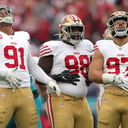
GO DEEPER
Steve Wilks is the big winner as 49ers’ pass rush, coverage finally converge
Captain Munnerlyn, a former cornerback who had two stints under Wilks in Carolina, said he saw Wilks in the coaching booth early on and knew he wouldn’t be there long.
“I said, ‘Wilks is gonna hate it up there!’” Munnerlyn said with a laugh during a phone interview this week. “He’s a guy who needs to be on that field so he can talk to you, man. I knew he’d be coming down soon. That’s not him. It’s not him at all.”
Advertisement
Instead, Munnerlyn described someone with charisma and presence who “laid down the law” when he first arrived in Carolina in 2012. The 10-year veteran said Wilks was the best coach he played for because he had such a strong connection to his players.
Munnerlyn recalled a game against the Miami Dolphins in 2013 in which he was burned on not one but two double moves early on, one of which resulted in a 53-yard touchdown. His brain was spinning when Wilks approached him after the second.
“I was about to go back on defense and he looked at me and said, ‘Nah, you’re gonna sit here for a minute,’” he recalled. “And he wouldn’t put me back in until he was sure I was ready to roll.”
Wilks ended up sending Munnerlyn back in, but at nickel cornerback instead of on the outside. It was the right move. He finished with a game-high nine tackles and the Panthers, trailing 16-3 in the second quarter, shut out the Dolphins the rest of the way.
“We ended up winning the game and I had a hell of a game,” said Munnerlyn, who credits Wilks for his turnaround. “I remember him talking to me on the sideline until I was able to get my head back into the game. Because I was out of it in the beginning.”
There are also strategic elements behind the 49ers’ defensive surge.
During the bye, Wilks concluded that the defense had become too stagnant. The impulse to not tinker with a good thing was working against it, particularly against savvy, veteran quarterbacks.
The Vikings’ Kirk Cousins and the Bengals’ Joe Burrow knew what to expect when they walked up to the line of scrimmage, and they picked San Francisco apart. Cousins’ 77.8 percent completion rate was his highest of the season. Burrow’s 87.5 rate was the highest of his career.
“We have such a great roster of players,” Wilks said. “Just being able to line those guys up and not think a lot is key. But you also have to be creative and know that teams know what we do. And you have to evolve just a little bit. And that’s what we did coming out of the bye. We kind of mixed things up.”
Advertisement
The 49ers tested the theory on Lawrence in Week 10. When the Jaguars quarterback initially surveyed the defense, he might have seen the 49ers in a single high safety look. When he looked again, they were in a two-high alignment. There were all sorts of disguises and pre-snap movement and things the 49ers hadn’t shown before.
“I think all season long we’d just kind of lined up and played whatever we were playing,” linebacker Fred Warner said. “In that game we decided that we wanted to give him different looks. Because he’d shown on tape that he’s a really, really great quarterback when he knows what he’s got.”
It quickly became clear that Lawrence didn’t know what he was seeing. He emerged from the loss with two interceptions, five sacks and a fumble, and afterward lamented the “exotic looks” San Francisco had thrown at him.
“It’s one of the worst games I’ve probably played in my career,” he said. “We couldn’t do anything right today.”
The defensive masterpiece came three weeks later in Philadelphia.
As powerful as the 49ers defense has been in the last five years, it had consistently been gouged by running quarterbacks. Lamar Jackson rushed for 101 rushing yards in 2019, Kyler Murray had 91 in 2020, Jalen Hurts 82 in 2021 and Marcus Mariota 50 yards and a touchdown in an Atlanta Falcons win last season.
Those quarterbacks had been able to exploit San Francisco’s aggressive defensive line. They’d merely allowed the linemen to burst up the field, then slipped through openings to find plenty of green grass on the other side.
In Philadelphia, however, the 49ers changed their defensive DNA by having Nick Bosa and his linemates rush patiently and methodically so that Hurts had few escape hatches. The 49ers essentially built a fence around the Eagles quarterback, trading sacks for security. The result: Hurts gained just 20 yards on seven carries and the run-heavy Eagles wound up with their lowest rushing total in nearly five years.
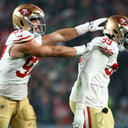
GO DEEPER
Nick Bosa and the 49ers executed a team-first defensive game plan in Philadelphia
“It is always hard to try to really deter from your identity, but it’s all about the element that particular week,” Wilks said. “It wasn’t about trying to get stats this particular game. It was about making sure that we maintain our rush lanes and didn’t rush past the quarterback, not giving them an opportunity to be able to step up inside the A and B gaps.”
Advertisement
Wilks didn’t enter the season with a “29-to-1”-like mantra like he had in San Diego. After all, there weren’t any dramatic improvements to be made in San Francisco and “1 to 1” isn’t all that catchy.
But he did note that for all their success and talent, the 49ers could stand to improve on the explosive plays they allowed. Last year, they finished seventh in explosive play rate, according to TruMedia, which defines explosives as runs of 12 or more yards and pass plays of 16 or more yards.
The 49ers aren’t at No. 1 yet. They rank fourth. But there are four games left and Wilks and the defense certainly have been moving in the right direction.
“You could see a little bit in the first five weeks that I was still trying to find my way, to mix in a little bit of who I am,” he said. “But now coming off the bye, having had time to reflect — from that point on it’s just been clicking.”
(Top photo: Andy Lewis / Icon Sportswire via Getty Images)
“The Football 100,” the definitive ranking of the NFL’s best 100 players of all time, is on sale now. Order it here.


